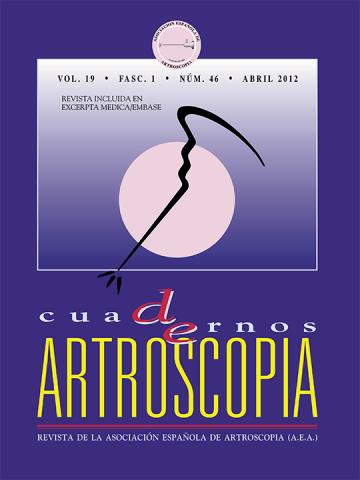DOI: (sin asignar)
Recibido: Abril 2012
Aceptado: Abril 2012
Artículo / Originales
Tunelizaciones en la reconstrucción del ángulo posterolateral de la rodilla. Valoración mediante TC en un modelo cadavérico
Tunnelizations in the reconstruction of the posterolateral angle of the knee. CT assessment in a cadaveric model
Cuad Artroscop. 2012;19(1):19-23
Comparte este contenido
En esta edición
- 25 años de artroscopia en el Hospital Sant Joan de Déu de Barcelona (1984-2008)
- Tunelizaciones en la reconstrucción del ángulo posterolateral de la rodilla. Valoración mediante TC en un modelo cadavérico
- Técnica de fuera a dentro para el túnel femoral en ligamentoplastia del cruzado anterior. La tercera vía
- Respuesta a la lesión del manguito de los rotadores: variación en la expresión de factores de crecimiento durante las primeras 8 semanas poslesión. Estudio experimental en ratas
- Sinovitis villonodular pigmentada en el hombro: caso clínico y revisión bibliográfica
- Técnica y resultados del tratamiento endoscópico de las rupturas del glúteo mediano en la cadera
- Aplicación de células troncales en patología de rodilla
- Prevención de las lesiones digitales en la realización de nudos artroscópicos
- Mejorando la revista
Más en PUBMED
Más en Google Scholar
Más en ORCID


Revista Española de Artroscopia y Cirugía Articular está distribuida bajo una licencia de Creative Commons Reconocimiento-NoComercial-SinObraDerivada 4.0 Internacional.


